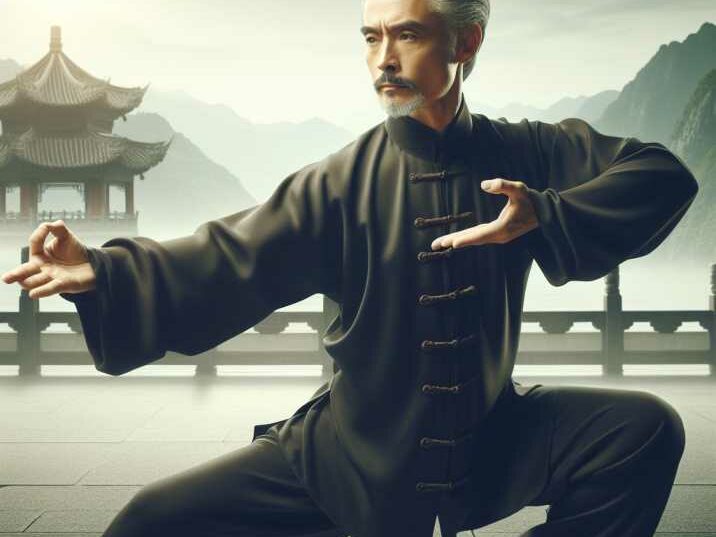Introduction:
Table of Contents
In the captivating world of martial arts, where discipline, skill, and philosophy converge, forms, commonly known as “kata” in the realm of Kung Fu, hold a profound significance. These choreographed sequences of movements are not merely a display of physical prowess but embody centuries of tradition, wisdom, and cultural heritage. Delving into the essence of forms (kata) in Kung Fu unveils a tapestry woven with layers of meaning, offering practitioners a path to self-discovery, mastery, and spiritual growth.

The Essence of Forms (Kata) in Kung Fu:
The Dance of Mastery and Discipline
Forms (kata) in Kung Fu serve as repositories of techniques, embodying the essence of various styles, from the graceful movements of Tai Chi to the explosive power of Shaolin Kung Fu. Practitioners meticulously practice each movement, striving for precision and fluidity, honing their skills through repetition and discipline. Beyond physical mastery, the practice of forms instills discipline, cultivating focus, patience, and perseverance in practitioners.
A Gateway to Cultural Heritage
Embedded within the intricate sequences of Kung Fu forms lies a rich tapestry of cultural heritage. Each movement carries the legacy of generations, reflecting the history, values, and philosophies of ancient Chinese civilization. Through the practice of forms, practitioners not only learn martial techniques but also immerse themselves in a living tradition, connecting with the wisdom of their ancestors and preserving cultural heritage for future generations.
The Path to Self-Discovery
Beyond the realm of physical technique, forms (kata) in Kung Fu offer a profound journey of self-discovery and personal growth. As practitioners delve deeper into the intricacies of each movement, they confront their limitations, fears, and inner struggles. Through dedicated practice, they learn to transcend physical boundaries, tapping into a reservoir of inner strength and resilience. The journey of mastering forms becomes a transformative experience, shaping not only the body but also the mind and spirit.
A Meditation in Motion
In the serene practice of Kung Fu forms, practitioners enter a state of flow, where movements seamlessly merge with breath and consciousness. Each posture, each transition becomes a meditation in motion, a moment of profound introspection and mindfulness. As practitioners immerse themselves in the rhythm of the forms, they cultivate a heightened awareness of the present moment, transcending the confines of ego and distractions. The practice of forms thus becomes a gateway to inner peace and tranquility.

The Evolution of Tradition in Modern Times
While rooted in centuries-old tradition, the significance of forms (kata) in Kung Fu continues to evolve in modern times. Beyond the confines of traditional schools, forms have found a place in contemporary settings, adapting to the needs and aspirations of practitioners worldwide. From performance-based competitions to holistic wellness programs, forms in Kung Fu have transcended cultural boundaries, offering a universal language of movement and expression.
Table of Information:
| Topic | Description |
|---|---|
| Mastery and Discipline | Precision and fluidity through repetitive practice |
| Cultural Heritage | Reflection of ancient Chinese values and philosophies |
| Self-Discovery | Overcoming limitations and tapping into inner strength |
| Meditation in Motion | Mindfulness and heightened awareness in practice |
| Evolution in Modern Times | Adaptation to contemporary settings and global audience |
Conclusion:
In conclusion, the significance of forms (kata) in Kung Fu transcends mere physical technique, encompassing a profound journey of self-discovery, cultural heritage, and spiritual growth. Through dedicated practice, practitioners unlock the essence of martial arts, weaving together discipline, mastery, and mindfulness. As we delve deeper into the timeless wisdom of Kung Fu forms, we embark on a transformative journey, bridging the past with the present and shaping the future of martial arts.
Frequently Asked Questions (FAQs) about the significance of forms (kata) in Kung Fu:
- What exactly are forms (kata) in Kung Fu? Forms, known as “kata” in Japanese martial arts and “taolu” in Chinese martial arts such as Kung Fu, are choreographed sequences of movements that encapsulate a particular style or aspect of the martial art. These forms serve as a structured means of practicing techniques, incorporating a variety of strikes, kicks, blocks, and stances. Each form is meticulously crafted to convey specific principles, techniques, and philosophies of the martial art.
- Why are forms (kata) considered essential in Kung Fu training? Forms play a central role in Kung Fu training for several reasons. Firstly, they serve as repositories of techniques, allowing practitioners to practice and refine a wide range of movements in a controlled manner. Additionally, forms embody the principles and philosophies of the martial art, providing a framework for understanding its underlying concepts. Moreover, the practice of forms cultivates discipline, focus, and mental fortitude, essential qualities for martial artists.
- How do practitioners benefit from practicing forms (kata) in Kung Fu? Practicing forms in Kung Fu offers a multitude of benefits for practitioners. Physically, it helps develop strength, flexibility, coordination, and muscle memory through repetitive practice of movements. Mentally, the practice of forms enhances concentration, mindfulness, and mental clarity. Furthermore, forms provide a platform for self-expression and creativity, allowing practitioners to imbue their movements with their unique style and personality.
- Are forms (kata) purely for performance, or do they have practical applications in combat? While forms in Kung Fu are often performed as a demonstration of skill and proficiency, they are not merely for show. Each movement within a form is rooted in practical combat applications, ranging from strikes and blocks to evasive maneuvers and grappling techniques. Through diligent practice and understanding, practitioners learn to apply the techniques from forms in real-life self-defense situations, making them a valuable aspect of martial training.


